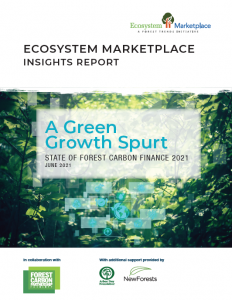A Green Growth Spurt
State of Forest Carbon Finance 2021
By Patrick Maguire, Stephen Donofrio, William Merry, Kim Myers, Laura Weatherer, Jordan Wildish, and Steve Zwick View PublicationIt’s been 30 years since Applied Energy Services teamed up with the World Resources Institute and the humanitarian aid organization CARE to pilot the first known use of carbon finance to slow climate change by saving forests. That project, dubbed “Mi Bosque” (“My Forest”), reversed deforestation by helping Guatemalan farmers implement agroforestry practices that increased their yields and reduced the need to expand into forests. The project’s carbon accounting was rudimentary by today’s standards, but it launched a cycle of experimentation, adaptation, and negotiation that continues to this day.
The argument for deploying forest carbon finance is a simple one. A staggering 23% of all human-caused greenhouse gas (GHG) emissions still come from inefficient management and destructive use of the Earth’s forests, farms, and fields, and healthy forests sequester carbon dioxide by the gigaton in an extremely cost-effective manner. The financial flows and carbon accounting, however, can be complex.
This report, the latest in our State of Forest Carbon Finance series that began in 2009, provides an update on the three major categories of forest carbon finance: compliance offset markets, voluntary offset markets, and the rapidly evolving landscape of national and subnational REDD+ funding mechanisms.

